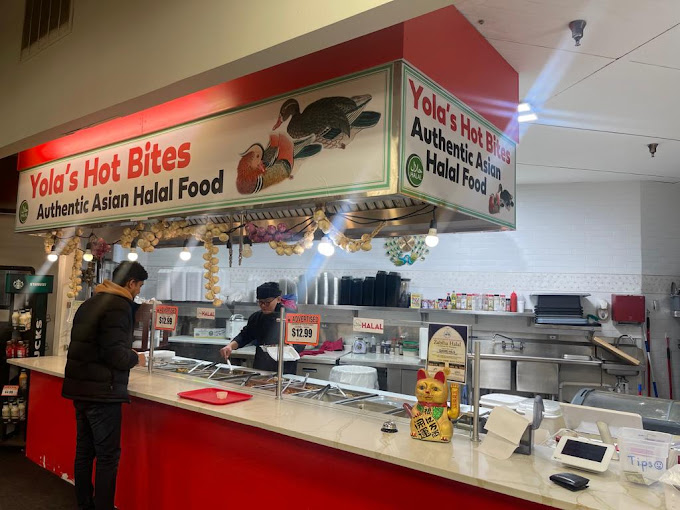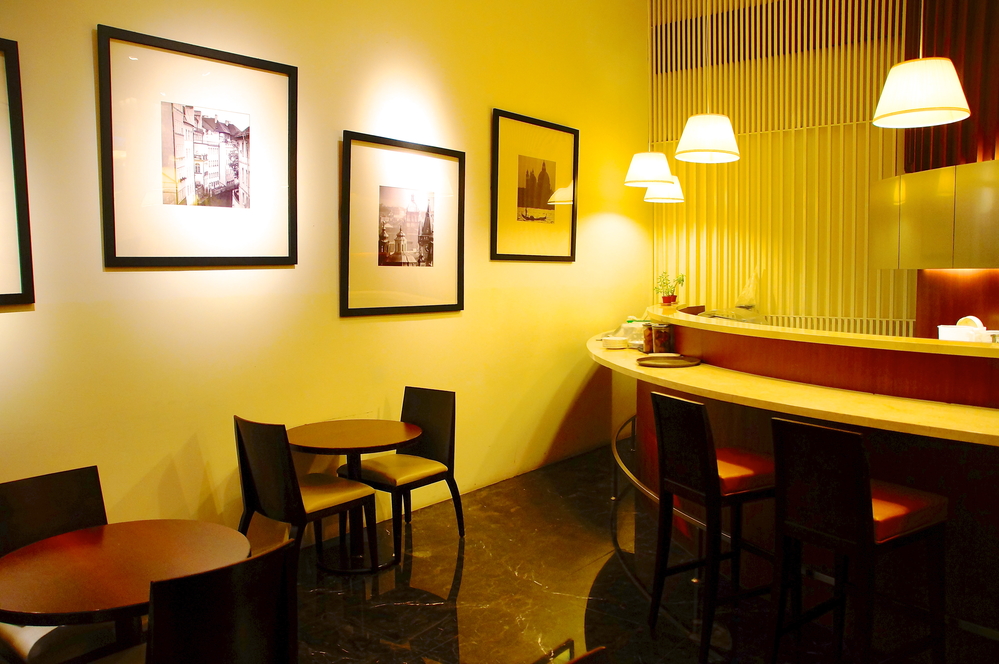Instagrammable Restaurants Islamabad: Picture-Perfect Dining Experiences
Instagrammable Restaurants Islamabad: Picture-Perfect Dining Experiences
Blog Article
Savor Authentic Oriental Cuisine With a Pan-Asian Twist for a Cooking Experience
Getting started on a culinary journey with genuine Oriental cuisine, improved with a Pan-Asian twist, supplies an unique opportunity to explore the rich tapestry of tastes that define the area's diverse cooking customs. As you ponder these attracting meals, think about the social stories and historical impacts that form them, each bite providing a story waiting to be discovered. Romantic restaurants Islamabad.

Discovering Pan-Asian Flavors
In the realm of international gastronomy, Pan-Asian food stands out for its remarkable variety and the harmonious interaction of flavors from numerous Eastern societies. This culinary strategy commemorates the abundant customs and special components discovered throughout the continent, producing a tapestry of tastes that is both rewarding and interesting. Secret to Pan-Asian cuisine is its capability to balance different flavors-- sweet, salted, spicy, and sour-- while highlighting the quality and quality of each active ingredient.
From the umami-rich soy sauce of Japan to the fiery chili peppers of Thailand, Pan-Asian cuisine offers an extensive scheme of flavors. These elements are frequently incorporated in inventive ways, improving dishes with layers of intricacy. As an example, using great smelling herbs such as lemongrass and cilantro, typical in Vietnamese and Thai food, includes a refreshing brightness to dishes, while the incorporation of coconut milk supplies a creamy, rich texture.
The emphasis on fresh fruit and vegetables and fragrant seasonings makes sure that each dish is not only a feast for the preference buds however also for the senses. Pan-Asian cuisine welcomes restaurants to start a culinary trip, exploring the large and differed landscapes of Asian gastronomy with every bite.
Combination Dishes to Try
While Pan-Asian food is commemorated for its conventional tastes, the modern-day cooking landscape is increasingly accepting blend recipes that mix these classic components with impacts from other areas. This cutting-edge technique not just honors the rich heritage of Asian cooking arts yet likewise presents unique preference experiences that interest modern tastes buds.
An archetype of such a fusion meal is the Korean-Mexican taco, where marinated bulgogi beef is wrapped in a cozy tortilla, topped with kimchi and a zesty gochujang-infused salsa. This combination weds the strong, mouthwatering tastes of Korea with the dynamic, fresh aspects of Mexican cuisine. In a similar way, sushi burritos have acquired appeal, amalgamating the fragile creativity of Japanese sushi with the hearty, hand-held convenience of a burrito, typically featuring combination active ingredients like tempura shrimp and avocado with a drizzle of wasabi mayo.
Another notable dish is Thai curry ramen, which infuses the velvety, fragrant flavors of Thai curry right into the reassuring brew of conventional Japanese ramen, producing an unified blend that tantalizes the detects. These fusion meals extend past plain uniqueness; they represent a culinary dialogue between societies, encouraging exploration and development on the planet of Pan-Asian cuisine.
Important Ingredients and Spices
To truly value Pan-Asian cuisine, one have to comprehend the essential active ingredients and flavors that create its foundation. This diverse cooking style attracts from a rich tapestry of Eastern traditions, utilizing an unified mix of flavors and textures. Trick components include soy sauce, fish sauce, and oyster sauce, which impart a savory umami deepness crucial to Asian recipes. Complementary to these are rice vinegar and mirin, lending a delicate level of acidity and sweetness.
Aromatic components are pivotal, with garlic, lemongrass, and ginger being common across various Pan-Asian dishes. These ingredients offer a fragrant base that improves the complexity of flavors. Spices such as celebrity anise, cardamom, and cinnamon present heat and personality, resembling impacts from regions like China and India.

Cooking Techniques and Tips
Understanding the art of Pan-Asian food needs experience with its distinct home cooking techniques, each contributing to the vivid tapestry of tastes this culinary tradition is celebrated for. Central to these methods is the stir-fry, a quick cooking method that protects the dietary stability and vibrant colors of ingredients. Using a wok, the stir-fry approach enables also warm circulation, vital for attaining the particular appearance and flavor balance of Pan-Asian dishes.
An additional fundamental strategy is steaming, especially common in Chinese cuisine. This gentle method keeps the all-natural tastes and nutrients of active ingredients, making it perfect for seafood and veggies. Dumplings, a cherished staple, typically gain from steaming, leading to soft, delicious appearances.
Barbecuing, additionally integral, presents great smoky midsts to meals such as Oriental bulgogi or Japanese yakitori (asian fusion restaurant). This method usually includes marinating ingredients, permitting tastes to pass through deeply prior to cooking over an open fire or warm plate
Finally, understanding the art of balancing tastes-- pleasant, sour, salted, bitter, and umami-- is crucial. Appropriately layering these aspects can raise a recipe from regular to remarkable, supplying a facility and satisfying cooking experience that symbolizes the essence of Pan-Asian cuisine.
Eating Experiences Worldwide
Throughout the globe, Pan-Asian cuisine uses an unrivaled eating experience, celebrated for its rich tapestry of tastes and dynamic discussions. This cooking phenomenon has transcended social limits, capturing the hearts and tastes of food fanatics worldwide. In cosmopolitan cities fresh York, London, and Sydney, Pan-Asian dining establishments work as fusions where culinary traditions from Thailand, Japan, China, and beyond converge, giving restaurants with a diverse mix their explanation of meals that highlight the area's diversity.
The worldwide allure of Pan-Asian cuisine hinges on its capacity to offer both credibility and technology. Chefs skillfully marry conventional ingredients such as lemongrass, soy sauce, and miso with contemporary strategies, resulting in meals that are both familiar and refreshingly brand-new. This blend enables restaurants to embark on a cooking journey that appreciates heritage while welcoming modernity.
Furthermore, dining experiences are raised via thoughtfully developed atmospheres that reflect the ethos of Pan-Asian appearances. From minimal Japanese-inspired insides to vibrant Thai-themed spaces, each restaurant uses a special atmosphere that enhances the culinary offerings. As a result, customers are not merely taking in a meal but partaking in a social experience, making Pan-Asian eating an absolutely international phenomenon.
Final Thought
The exploration of Pan-Asian food uses an extensive understanding of the detailed interplay of flavors and culinary practices across Asia. By accepting blend meals such as Thai curry ramen and sushi burritos, the cooking trip not only highlights the flexibility of traditional ingredients but likewise showcases ingenious modern strategies. This gastronomic adventure, enhanced by necessary flavors and cooking techniques, supplies a special possibility to appreciate the social diversity and culinary creativity that define Pan-Asian cuisine on a global range.
Beginning on a culinary trip via authentic Oriental food, enhanced with a Pan-Asian twist, uses a distinct opportunity to discover the abundant tapestry of flavors that define the region's diverse culinary traditions.In the world of worldwide gastronomy, Pan-Asian food stands out for its remarkable diversity and the unified interplay of tastes from numerous Asian societies. Trick to Pan-Asian cuisine is its capability to balance contrasting flavors-- sweet, salty, spicy, and sour-- while highlighting the freshness and high quality of each component.

Report this page